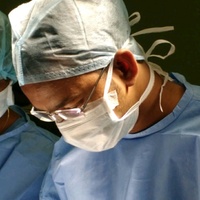Summary
Circumcision is a procedure in which the doctor removes the foreskin on the penis. It is commonly performed in newborns but can also be performed later in life. The procedure may be done for religious or health-related purposes. However, it is contraindicated if the baby is born preterm or has any conditions of the penis from birth.
Before the surgery, the doctor will take your medical history and perform a physical exam. The circumcision will be performed under local or general anaesthesia. It can be performed by three methods in older boys and men and four different methods in newborns. After the circumcision, the genital area should be kept clean and dry for a day and rest at home is advised. Do not perform any strenuous activities immediately, and avoid sexual activities for about four to six weeks.
The follow-up visit will be one week after the circumcision, but if you notice symptoms like fever or are unable to urinate normally for 12 hours, see your doctor immediately.
- What is male circumcision?
- Why is male circumcision recommended?
- Who can and cannot get male circumcision?
- What preparations are needed before male circumcision?
- How is male circumcision done?
- How to care for yourself after male circumcision?
- What are the possible complications/risks of male circumcision?
- When to follow up with your doctor after a male circumcision?
What is male circumcision?
Male circumcision is a surgical technique in which the foreskin is removed from the penis. It is one of the oldest surgeries in the world, and more than a quarter of the male population in the world undergo this. The procedure is commonly performed in a newborn male child but can be performed later in life as well. When done in a newborn, the benefits are more and the risks are much less. Male circumcision may be done for religious or cultural reasons or medical reasons.
Why is male circumcision recommended?
Circumcision is commonly performed for religious, social, or cosmetic reasons. The doctor may also perform the surgery in the following medical conditions:
- Balanitis
- Phimosis (condition in which the foreskin cannot be retracted from the penis)
- Posthitis (foreskin inflammation)
- Paraphimosis (condition in which the foreskin cannot be pulled forward from the penis)
- Balanoposthitis (inflammation of both the head of the penis and the foreskin)
- Warty lesions on the foreskin
- Cancerous or precancerous lesions on the foreskin
Who can and cannot get male circumcision?
A doctor may not recommend circumcision if you have any of the following conditions:
- Conditions that cause abnormal healing (e.g., the formation of keloid or granulomas while healing)
- Chordee (a condition in which head of penis curves upwards or downwards)
- Webbed penis, buried penis, inguinal hernias, or large hydroceles
- Hypospadias (a birth defect in which the urethral opening is under the penis and not on tip)
In infants, the contraindications are as follows:
- A preterm baby
- Any bleeding disorders
- Jaundice
- Congenital (from birth) abnormality of the penis
What preparations are needed before male circumcision?
The following procedure will be followed before surgery:
- The doctor will take your complete medical history and conduct a physical examination to ascertain that you are in otherwise good health for the surgery.
- You may be asked to get the human immunodeficiency virus (HIV) test.
- You should inform your doctor about all the medicines you take or if you are allergic to any medication. Your doctor may tell you to discontinue blood-thinning medicines like aspirin, warfarin, or ibuprofen.
- Stop smoking a few weeks before the procedure as smokers are at increased risk of complications after a surgery.
- Avoid drinking or eating after midnight the night before the surgery if you are going to have the circumcision under general anaesthesia.
- You will need to sign a consent form before the surgery, allowing the doctor to perform the procedure.
- Trim your pubic hair, so that the dressing placed after the surgery does not get obstructed by it.
- On the morning of the circumcision, wash your penis and genital area well with water and mild soap and also the area under the foreskin.
How is male circumcision done?
The common steps to perform circumcision in adults are as follows:
- Circumcision may be performed under local (numbs the area, but you will be awake) or general anaesthesia (a medicine that will put you to sleep for the duration of the procedure). The surgeon may also give you a paracetamol tablet one to hours before the procedure and about six hours after the surgery to manage pain.
- The surgeon will retract the foreskin completely and separate any adhesions (part of the foreskin stuck to the glans, which is the head of the penis).
- The foreskin will then be returned to the resting position, and the intended position of the circumcision will be marked.
The surgeon may follow any of the below methods to perform the circumcision:
-
Forceps-guided method: The forceps-guided method is performed in the following manner:
- The surgeon will hold the outer and inner surfaces of your foreskin with two forceps at the 3 and 9 o’clock positions.
- He/she will pull the marked foreskin just beyond the glans and using forceps.
- After confirming that the glans has not been caught, he/she will then cut the extended part of the foreskin with the scalpel close to the outer aspect of the forceps. The forceps used will protect the glans.
- Finally, the surgeon will pull back the skin, use sutures to stitch any open blood vessels and the circumcised area and apply a dressing over the area.
- Dorsal slit method: This method is used in individuals who have conditions like phimosis:
- After adhesions are removed, the surgeon will hold the foreskin with the help of forceps.
- Two additional forceps will be used to hold the foreskin on the upper side.
- Next, he/she will make a slit between these forceps up to the marking.
- The surgeon will cut off the foreskin along the marking, taking care that it is evenly removed, any excess foreskin will be trimmed.
- Finally, the surgeon will suture any open blood vessels in the circumcised area with absorbable sutures, and apply a dressing over it.
- Sleeve resection method: This method is performed in the following manner:
- The surgeon will make an outer marking on your foreskin with a “V-shape” on the underside with the apex towards the tip of the penis.
- He/she will make another marking on the inner end of your penis.
- The surgeon will make cuts along the marking in the skin up to the subcutaneous tissue. An assistant will retract the skin using a moist cotton swab as the cut is being made.
- Once the cuts are made on the marking, a sleeve-like foreskin will be left on the penis.
- The surgeon will then cut this sleeve of the foreskin using scissors.
- Finally, the surgeon will tie up any bleeding vessels in the circumcised area using sutures and apply a dressing over the area.
The stitches used are absorbable, so their removal is not required. After the circumcision, wear a pair of well-fitting underwear to hold the dressing in place for one or two days. After that, once the dressing is removed, it is preferable to wear loose underwear.
For infants and young boys, the procedure is as follows:
- The doctor will clean the lower abdomen and penis of the child with an iodine-povidone solution.
- They will then cover their lower abdominal and thigh area with sterile drapes containing a hole so that the penis can pass through it.
- The child will be given local anaesthesia.
- If the opening of the foreskin around the glans is not wide enough, the surgeon will dilate the opening and then retract the foreskin. Then, he/she will separate the adhesions, and make markings at the site of circumcision.
The circumcision can be performed by the following methods:
- Dorsal slit method: This is performed in the same manner as in an adult male.
- Plastibell method: The Plastibell is a plastic bell with a groove on its back. This technique involves the following steps:
- The surgeon will select the correct Plastibell size for the child.
- He/she will place the Plastibell tie placed loosely around the shaft of the child's penis.
- The surgeon will then make a slit on the foreskin of the child and place the Plastibell on the glans.
- Next, the surgeon will place the foreskin over the Plastibell, and loop and tie the suture material tightly around the groove.
- The surgeon will cut off the blood supply to the foreskin. This leads to withering of the foreskin, which drops off in seven to 10 days.
- The Plastibell will fall off on its own in five to eight days, or it may be cut off after 36 to 48 hours after the circumcision.
- In another variation of this procedure, after placing the Plastibell device and tying off the suture material, the surgeon will cut off the foreskin, leaving 1-2 mm of cuff so that the suture material does not slip off. The surgeon will snap the handle of the Plastibell. The tissue distal to the Plastibell will drop off in 5-8 days along with the Plastibell.
- Mogen clamp method: The Mogen clamp is a metal hinge-shaped instrument. This method of circumcision is performed in the following way:
- A surgeon will carefully remove all adhesions so that the glans does not get pulled into the clamp and get injured.
- He/she will pull the foreskin and inserted it in the slit of the clamp.
- The surgeon will confirm that the glans is not caught in the clamp and then close the device and leave it for about three to five minutes.
- Next, he/she will clamp the foreskin outside of the clamp, and open and remove the device.
- The surgeon will pull the glans outside to allow the healing to take place properly.
- Stitches are not required in infants; however, some may be used in children above two months of age.
- After the procedure, the wound will be wrapped with a piece of gauze (a thin piece of cloth).
- Gomco clamp method: The Gomco clamp consists of four parts (base plate, rocker arm, nut, and bell) that need to be assembled before the procedure. The procedure will be performed as follows:
- An appropriate-sized Gomco clamp is chosen.
- The surgeon will make a small slit on the upper side of the foreskin, pull back the foreskin and remove all adhesions carefully.
- He/she will place the bell of the clamp above the glans and place the foreskin over the bell.
- The surgeon will then pull the foreskin uniformly over the bell and clamp it tightly around it.
- Next, he/she will place the base plate of the Gomco clamp over the bell. The rocker arm of the clamp will be put into position, and the clamp will be tightened until the foreskin is crushed. The surgeon will cut the foreskin in a circumference.
- The clamp is kept in place for five minutes and then removed.
- In children over sixty days, stitches may be required.
After the surgery, your healthcare provider will keep you under observation for at least half an hour to check for any complications, which may have occurred during the operation. The nurse will check your vital signs twice in half an hour.
How to care for yourself after male circumcision?
You can take the following care at home after the surgery:
- For the first three days, rest at home and lie on your back, so that there is no pressure on your penis. However, walk a little in the house.
- Keep the penis and genitals dry for one day after the surgery.
- You can remove the dressing in one or two days if there is no bleeding. Apply a new dressing if there is any bleeding or oozing. You do not need any dressing once the bleeding stops.
- You can take a bath the day after the surgery, but avoid getting the dressing wet.
- After the dressing is removed, you can shower twice a day and clean the genital area with water and baby soap.
- Do not perform any strenuous activities or play sports for four to six weeks until the wound has healed completely.
- Avoid sexual intercourse or masturbation for four to six weeks after the circumcision. To protect the wound for another six months, use condoms.
Circumcision has multiple benefits, namely:
- Decreases the risk of urinary tract infections
- Reduces the chances of penile cancer
- Increases chances of protection against sexually transmitted diseases like HIV
- Makes it easy to clean the penis
When to see the doctor?
Visit your doctor immediately if you notice any of these symptoms:
What are the possible complications/risks of male circumcision?
The possible complications of circumcision include:
- Infection
- Bleeding
- Removal of the excessive or insufficient foreskin
- Skin bridges (areas of the skin from the edge of the circumcision to the glans)
- Abnormal healing of the circumcision wound
- Formation of cysts along the edge of the circumcision
- Meatal stenosis (narrowing of urethral opening)
- Meatitis (inflammation of the opening of the penis)
- Hypospadias
- Chordee
- Urinary retention due to dressing
- Epispadias (rare) - a condition in which the urethral opening is located on the upper side
- Amputation of the glans (rare)
When to follow up with your doctor after a male circumcision?
A follow-up consultation will be in a week to check the healing of your wound.
Disclaimer: The above information is provided purely from an educational point of view and is in no way a substitute for medical advice by a qualified doctor.
Find General surgeon in cities
Surgery Cost In Your City
Doctors for Male circumcision

Dr. Piyush Jain
General Surgery
5 Years of Experience

Dr. Rajive Gupta
General Surgery
28 Years of Experience

Dr. Prity Kumari
General Surgery

Dr. Mangesh Yadav
General Surgery
5 Years of Experience
References
- Ahmed AA, Mungadi IA. Techniques of male circumcision. J Surg Tech Case Rep. 2013 Jan-Jun; 5(1): 1–7. PMID: 24470842.
- U Health [Internet]. University of Utah. Utah. US; Circumcision & Frenuloplasty
- Stanford Medicine: Newborn Nursery at Lucile Packard Children's Hospital [Internet]. Stanford Medical Center. Stanford University. US; Complications of Circumcision
- World Health Organization [Internet]. Geneva (SUI): World Health Organization; Manual for Male Cicumcision under Local Anaesthesia
- Hernandez A, Sherwood ER. Anesthesiology principles, pain management, and conscious sedation. In: Townsend CM Jr, Beauchamp RD, Evers BM, Mattox KL, eds. Sabiston Textbook of Surgery. 20th ed. Philadelphia, PA: Elsevier; 2017:chap 14.
- Cohen NH. Perioperative management. In: Miller RD, ed. Miller’s Anesthesia. 8th ed. Philadelphia, PA: Elsevier Saunders; 2015:chap 3.
- Nemours Children’s Health System [Internet]. Jacksonville (FL): The Nemours Foundation; c2017; Circumcision















